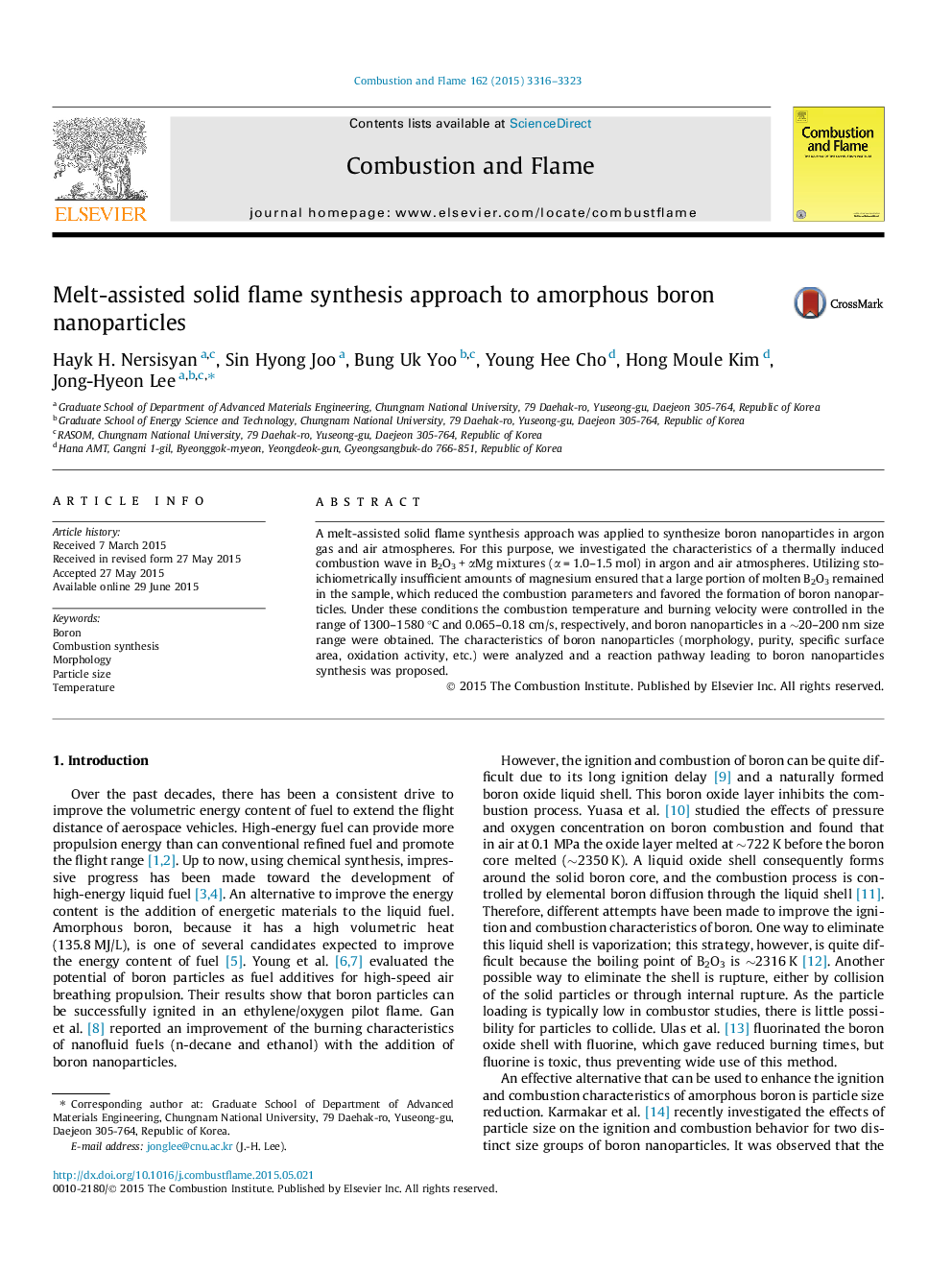| Article ID | Journal | Published Year | Pages | File Type |
|---|---|---|---|---|
| 10264622 | Combustion and Flame | 2015 | 8 Pages |
Abstract
A melt-assisted solid flame synthesis approach was applied to synthesize boron nanoparticles in argon gas and air atmospheres. For this purpose, we investigated the characteristics of a thermally induced combustion wave in B2O3 + αMg mixtures (α = 1.0-1.5 mol) in argon and air atmospheres. Utilizing stoichiometrically insufficient amounts of magnesium ensured that a large portion of molten B2O3 remained in the sample, which reduced the combustion parameters and favored the formation of boron nanoparticles. Under these conditions the combustion temperature and burning velocity were controlled in the range of 1300-1580 °C and 0.065-0.18 cm/s, respectively, and boron nanoparticles in a â¼20-200 nm size range were obtained. The characteristics of boron nanoparticles (morphology, purity, specific surface area, oxidation activity, etc.) were analyzed and a reaction pathway leading to boron nanoparticles synthesis was proposed.
Related Topics
Physical Sciences and Engineering
Chemical Engineering
Chemical Engineering (General)
Authors
Hayk H. Nersisyan, Sin Hyong Joo, Bung Uk Yoo, Young Hee Cho, Hong Moule Kim, Jong-Hyeon Lee,
